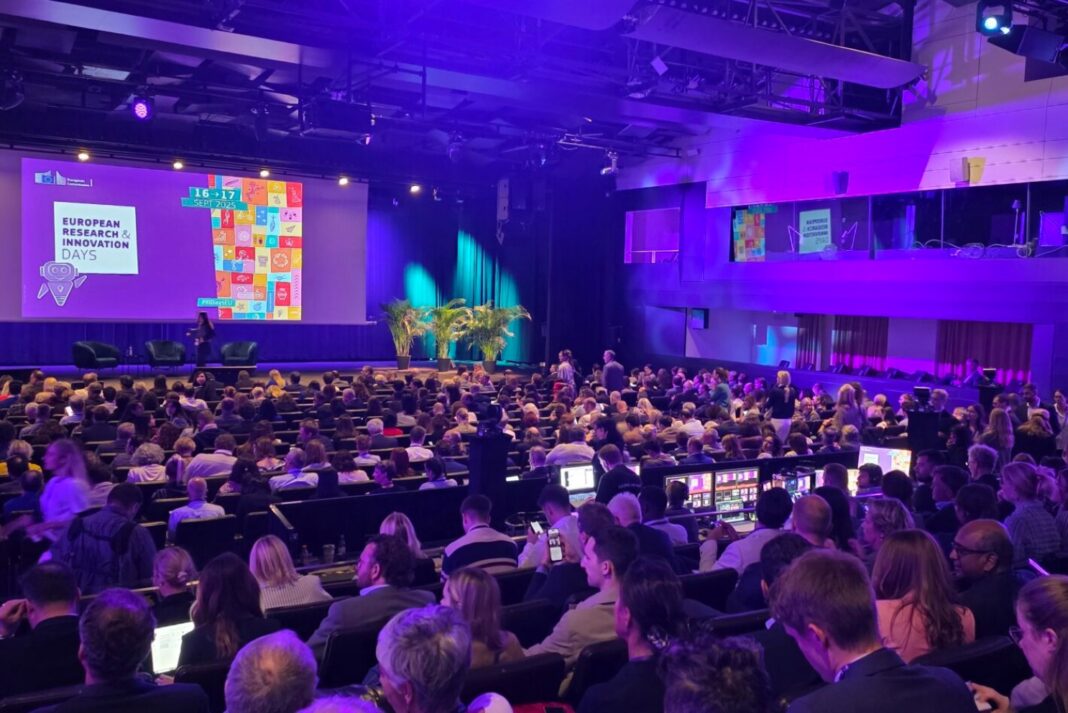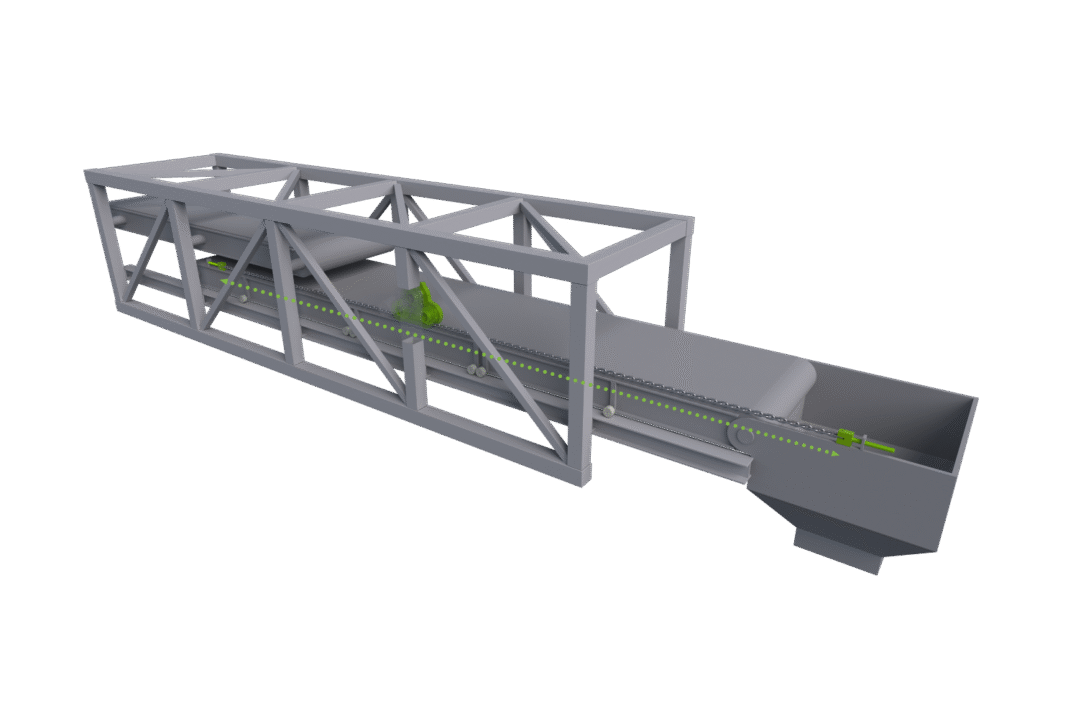At the European R&I Days in Brussels, institutions and stakeholders outlined the path: simplification, incentives, and flexibility
Over 3000 participants, 20 panels, and also extensive networking opportunities. On September 16th and 17th, the 2025 edition of the European Research and Innovation Days was held in Brussels, the event that connects researchers across borders and disciplines. The European Commission’s annual flagship research and innovation event brings together policymakers, researchers, stakeholders, and the public to debate and shape the future of research and innovation in Europe and beyond.
From the proposal to double the Horizon Europe program, to the ongoing work on the new Scale-up Europe Fund together with private investors, and the new European Investment Bank Group’s programme dedicated to accelerating innovation, TechEU, the two-day event brought back to the center of discussion the objective of 3% of GDP for research and development spending, a target which has still not been reached.
Beyond the Horizon: future funding for R&I
The first opening panel, Beyond the Horizon: future funding for R&I, featured the opening speech of the President of the European Commission Ursula Von Der Leyen. After that, European Commissioner for Startups, Research, and Innovation, Ekaterina Zareyeva, emphasized that «This commission is determined to make Europe the best place for R&I and for technology companies».
What lies beyond #HorizonEU?
— Ekaterina Zaharieva (@EZaharievaEU) September 16, 2025
It is all about continuity and novelty.
We must build on what works but we want to focus on simplification too.
With a nearly doubled budget, we want to make it work for competitiveness!
#RIDaysEU pic.twitter.com/yNQwv4mkDm
The initiatives put in place by the Commission are various. Besides the already mentioned proposal of doubling Horizon Europe, «We presented plans to make Europe the home of start-ups, scale-ups and life sciences», she said. «We adopted in May the first ever start-up and scale-up strategy for the European Union. We also adopted the life science strategy and the Commission adopted a new strategy for research and technology infrastructure».
Attracting global talent with choose Europe
Furthermore, a few months ago, the Commission announced the Choose Europe initiative: «The goal – explained Commissioner Zareyeva – is to attract and retain also our talents here in Europe. We already see the results of this initiative. Applications from outside Europe to the European Research Council have grown to almost four times the previous level. And actually, the applications for Maria Skudov’s Q-reactions are at the highest level ever since this part of the program exists».
To ensure that Europe is the best place in the world both to start and to scale a company, the Commission is also working «on a new scale of Europe fund with private investors building on the success of the European Innovation Council».
The balance between regulation with high standards remains a delicate topic: «I really believe this, to keep the high standards that we are proud of in Europe, but at the same time to have innovation and business-friendly regulatory regulations, and we are really working to deliver on this». The Commission’s proposal is for «a European regime for companies with accessible procurement for startups, with the regulatory sandboxes and all the simplification to deliver to our applicants and beneficiaries».
«It’s technology that’s driving geopolitics»
The panel also featured the participation of Austria’s Minister for Women, Science, and Research, Eva-Maria Holzleitner, and Professor Silvia Schwag-Serger from the School of Economics at the University of Lund in Sweden. All the participants pointed out the fact that academic freedom is a cornerstone of competitiveness. And especially in these times, Europe needs to protect scientists, open research, critical inquiry, and the exchange of diverse ideas without political interference.
"We don't hire smart people to tell them what to do, we hire them to tell us what to do."
— European Research Council (ERC) (@ERC_Research) September 17, 2025
ERC grantee Jan Lagerwall (quoting Steve Jobs), during #RIDaysEU discussion of how a bottom up approach, supporting investigator-driven frontier research, helps us meet future challenges. pic.twitter.com/4bN745dJeB
Another theme that emerged is the strong link to the European Competitiveness Fund. At the moment it is still in the early phase of negotiations, but the ECF could be a chance to cover the full innovation pipeline if the right framework conditions are set. Each of the four policy windows of the ECF includes an R&I component to support collaborative research with the general objective to increase competitiveness in Europe. And the fourth pillar, which is new, is research and innovation infrastructure: the European Research Area. Scientists and the private sector need such as state-of-the-art infrastructure.
A call for joint efforts and bold reforms
But European programs, no matter how big they are, will not be enough for Europe to become more competitive. Many participants stated that the EU needs a joint effort of private and public R&I investments across all member states. Therefore, member states should be more involved in the agenda setting of the R&I components of the four policy windows that the current proposal of the Commission suggests. But also, more reforms are needed. Europe should be braver, give more trust to program managers, and give them more power to boost and support what works and to stop what does not work. All the speakers agree on the importance of the European Research Council as one of Europe’s big assets and that we need to strengthen it.
«It’s technology that’s driving geopolitics», said Professor Silvia Schwag-Serger. «Europe is strong in science and it needs to remain strong in science. Where Europe still has weaknesses in technology and need to focus a lot more on technology adoption. Europe’s weakness, looking at the data, is that the investment gap is in the private sector. And it’s in the private sector, in large companies, not only in startups, but also in existing companies that technology is adopted and developed. So we need to focus a lot on how we can speed up technology adoption and development. And there I think industry plays a huge role».
The EU funding & me app
Minister Eva-Maria Holzleitner echoed the need for streamlining, stating, «Simplification is essential for our researchers and innovators». She added, «It will also be useful to establish a single gateway as a one-stop shop for information about funding opportunities, application modalities, and data stemming for the monitoring exercises».
She further explained that this approach would mean «The complex funding landscape for collaborative research in Horizon Europe and the ECF with different objectives and different eligibility rules will really be simpler for participants, because that would be the key to really simplifying that it is simpler for participants in general».
An initial step towards simplification, while awaiting a structural redefinition of Horizon, is the EU funding & me app. The official app from the European Commission aims to become the gateway to EU funding opportunities on the go. Simple and intuitive, it will be much more helpful for stakeholders to find the specific calls that suit them. Its purpose is to help users find the appropriate measures and support within the European funds, promoting more open calls that translate to more bottom-up initiatives.
The EU funding & me app is now live! 📲
— EU Research Results (@CORDIS_EU) October 1, 2025
The app aims to simplify access to EU funding. Designed to make it easier, the app improves visibility, usability, & accessibility of funding opportunities.
Download now: https://t.co/PJSV66kopd@EUScienceInnov @HorizonEU pic.twitter.com/nxSK6iE0VP
«The private sector and the scientists know better than us what they need», said Commissioner Zareyeva. «And this will give them much bigger flexibility to how they structure, really, their partnerships and how they develop their projects». Flexibility remains a crucial topic, especially in a context where, across Europe, it is challenging for public research funders to truly revolutionize how they design calls, select funding, and integrate AI into their workflows.
The budget is not enough
Regarding the budget: increasing it to 170 billion is welcome, but it is not enough to reach the R&I investment targets. The discussion therefore turned to what more could be done to support member states in investing in R&I, perhaps on a national level, how to boost investment from the private sector, and how to motivate private sector investment.
«Simplification, harmonization, and incentives for them», said Commissioner Zareyeva. «For example, tax exemptions for companies who invest in R&I. Better synergy between the programs. Co-invest with them. Cover their first risk. This is the way that the EU can support efforts to increase investment and fill the gap». Member states need to better understand how the coordination mechanism between European and national R&I initiatives will work in the future. Whatever happens, the Commission and the member states should work together to increase the impact of R&I while simultaneously increasing their investment levels for R&I within the member states themselves.
Fill the gap in the investment target
At the heart of the matter is the 3% target. On this topic, Ms. Teresa Czerwinska, Vice President of the European Investment Bank, intervened. «We still currently stand slightly above 2% of GDP of investment in research and development», she explained. «But this is not just a statistical gap. This is a strategic one. Europe’s innovation deficit is driven by both public and private underinvestments. Fragmented markets, uneven national strategies, and limited scale have held us back. But we can and we must change this trajectory».
She then highlighted the role of The European Investment Bank Group since 2000: «We have invested about 300 billion euros in innovation only», she said. «This makes our portfolio the largest among development banks and builds strong partnerships across Europe and beyond. From our experience with the European fund for strategic investments through investEU we see a clear path for strengthening innovation financing in Europe and reach the 3% target. This path must respond to robust market demand with a sizable predictable and flexible financing envelope for risk sharing.»
The program InvestEU
Regarding InvestEU, the European Union (EU) program and successor to the Juncker Plan, which aims to stimulate investment to foster competitiveness, growth, and employment, especially in the fields of innovation, digitalization, sustainability, and SMEs, the Vice President of the European Investment Bank described it as «a pillar for reaching the target». «The EIB group has been the main implementing partner and thanks to our strategic partnership with the commission. Over 1,000 operations have been approved to date».
InvestEU was designed to boost innovation and job creation across Europe by de-risking investments. «And under InvestEU the EIB group has signed over 24 billion euros of financing across four main policy areas», she stated. A wide range of instruments have been deployed: «Venture debt for high-risk tech companies and the early commercial stage», for instance, but also «quasi-equity products to strengthen the capital base of companies with sustainable long-term growth for beneficiaries where traditional financing is unavailable or insufficient».
Supporting scaleups and deep tech champions
But to achieve the target, Czerwinska emphasized, «we also need to support scaleups like our European tech champion initiative led by the European Investment Fund. It targets scale up in venture capital funds focusing on innovative technologies companies in deep in deep tech, digital AI, health and life sciences, space and defense, cyber security, quantum and climate impact. The funds managed by European Investment Fund invested more more than two billion euros in eight scale up European funds mobilizing up to 10 billion euros of public and private resources for European companies and we look forward to working with the commission’s proposal for a new scale up European fund to complement ETCI and ETCI 2».
On the topic of simplification, the EIB has welcomed the work on the omnibus proposal and encourages further simplification of mandates and reporting. «We need to align with market standards and decrease the burden on smaller enterprises», she added. «On our side, we also see concrete, tangible results from mandates simplification in-house. Consolidated mandates shorten time to market, free up resources and decrease red tape».
And finally, flexibility: «The EIB group is working closely with the commission to ensure that InvestEU is implemented efficiently and flexibly», she said. «By leveraging the bank’s thematic products, we are able to respond effectively to evolving policy changes and the needs of the market. The InvestEU member state compartments give member states the flexibility to address specific national needs and priorities while reaping the benefits of the EU guarantee».
Accelerating through TechEU
A sore point remains: «The member state compartment addresses the fragmentation of national and EU-level investments. These have been critical in cohesion regions where innovation ecosystems are still emerging, such as Romania, Bulgaria, and Malta, but also in other regions. Yet we know that more remains to be done. As a result, we decided to launch the TechEU program, which is about providing 70 billion euros for innovation, digitalization, and technology over 2025-2027 to mobilize up to 250 billion euros in investments».
TechEU, launched in August, finances European projects and companies from idea to IPO. «It provides a complete palette of financial instruments across the company growth and innovation cycle, and TechEU will serve as a one-stop shop, ensuring a fast track for projects in the innovation area by operating at the pan-European level. It strengthens the EU single market for innovative company financing. With TechEU, we focus resources where they are needed most. The group is stepping up existing successful instruments such as venture debt, indirect equity, and co-investments, and launching new instruments such as acquisition finance and scale-up debt to cover existing gaps. And the TechEU program will help ensure that European startups and scaleups can remain in Europe, through dedicated products supporting the exit phase of the company growth cycle».
Mobilizing private capital for Europe’s innovation ecosystem
Finally, she stressed that to reach the target, «we will need to activate even further private institutional investors such as pension funds and insurance companies. This is essential to deepening Europe’s innovation ecosystem and ensuring sustainable growth».
The R&I ecosystem in Europe faces many challenges. While talent is distributed everywhere, opportunities are not. If there was one unified message that emerged from the two days in Brussels, it is that institutions, infrastructure, non-discriminatory regulations, and adequate budgets are needed to support our researchers and give them the opportunities they require.








